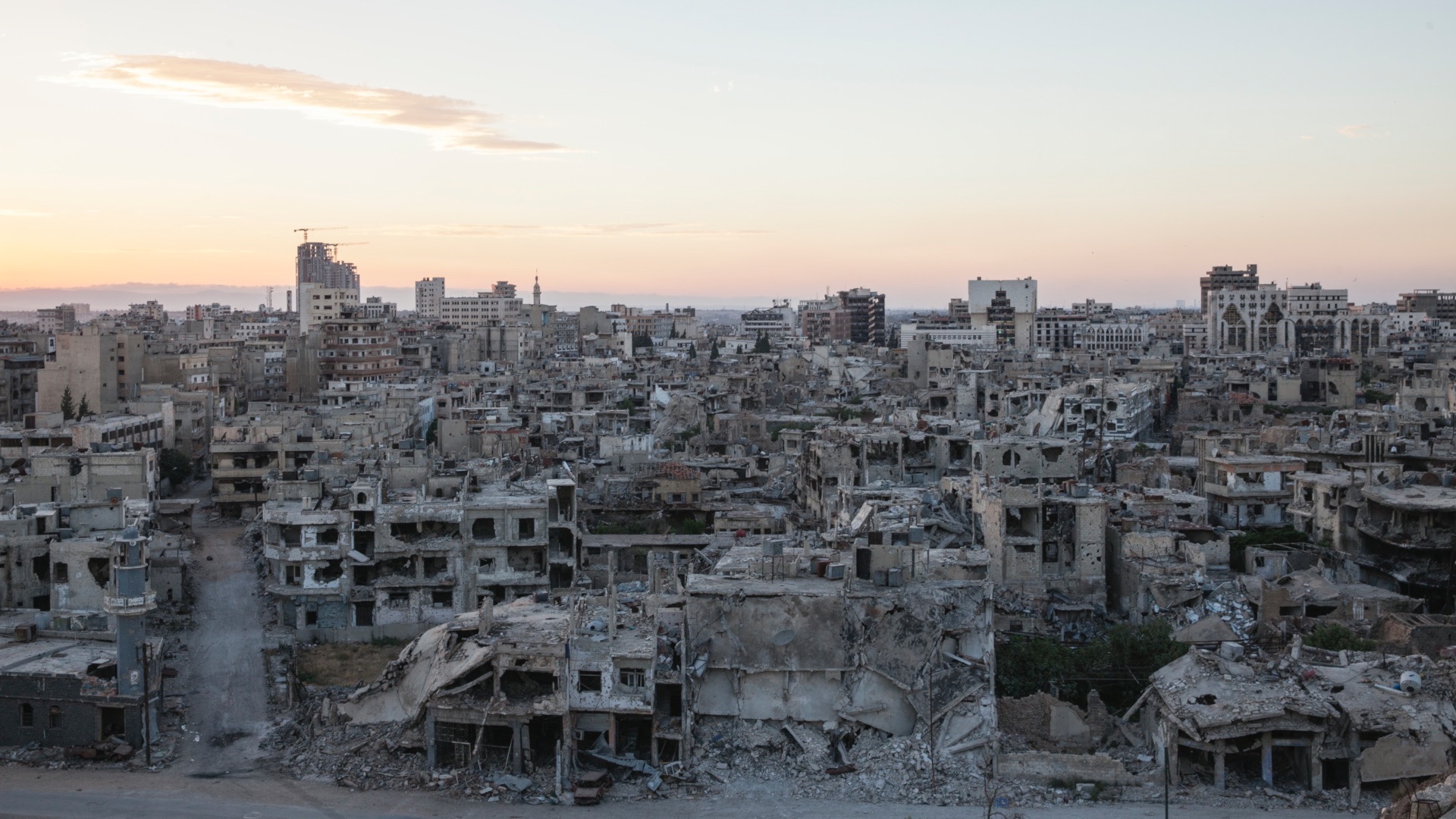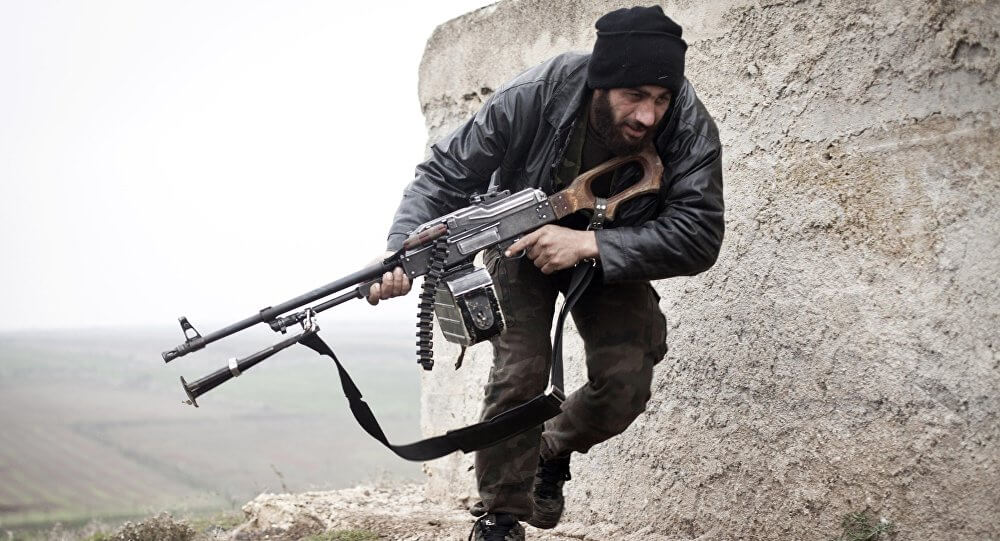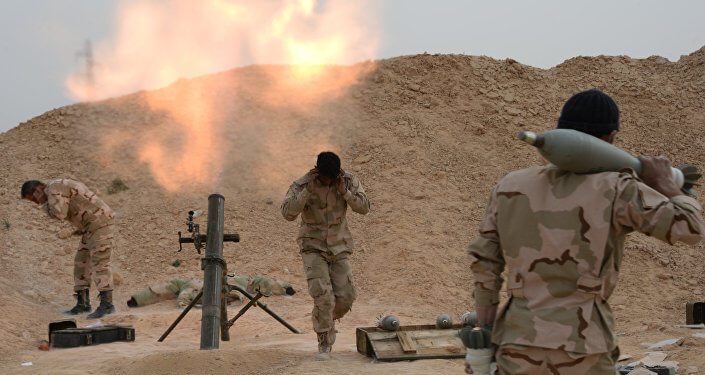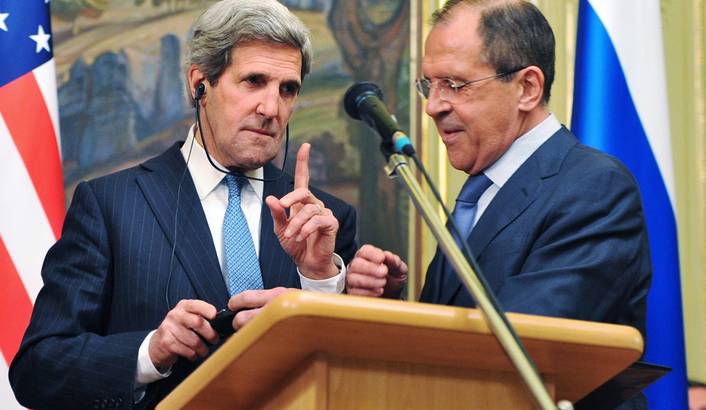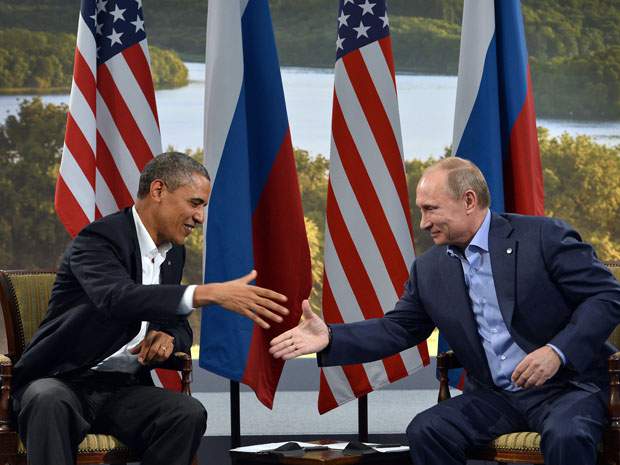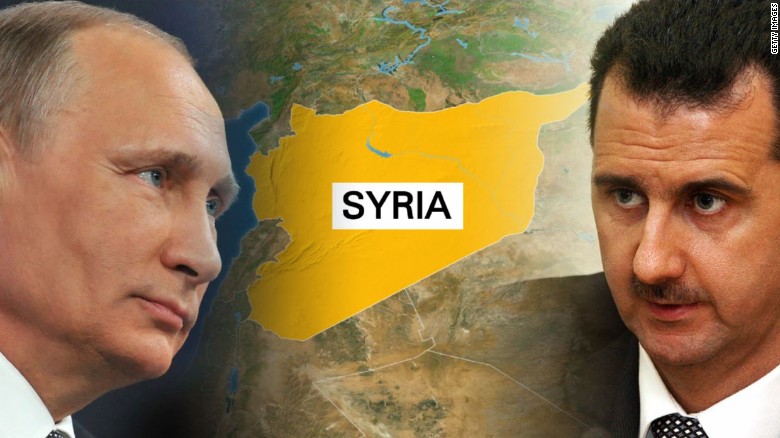by Thierry Meyssan
Washington-Moscow relations
For the second time, the United States and Russia have signed an agreement and concluded a peace plan for Syria.
The first time was during the Geneva Conference in June 2012 [1]. The content of this agreement concerned bringing peace both to Syria and the whole of the Middle East by dividing the region into zones of influence [2]. However, this agreement was immediately sabotaged by Secretary of State Hillary Clinton and her group of « liberal hawks » and « neo-conservatives ». And less than two weeks later, France organised a reprise of the war, during the Paris Conference of « Friends of Syria » [3], then with the operation « Damascus Volcano and Syrian Earthquake » [4]. To this dispute was added the coup d’État in Ukraine at the end of 2013. The two events marked the almost total suspension of diplomatic relations between Washington and Moscow.
The second time was during the visit by John Kerry to Vladimir Putin at the Kremlin, on the 15th Decembre 2015 [5]. Their encounter was immediately followed by a meeting of the High Commission of the Syrian opposition, and the adoption of Resolution 2253 [6], which forbade the financing of Al-Qaïda and Daesh, and Resolution 2254 [7], which institutionalised the efforts deployed in Geneva and Vienna for Syria. To general surprise, the High Commission of the opposition elected the Ba’athist ex-Prime Minister Riad Hijab – member of a tribe present in Arabia – to lead its delegation. In order to avoid errors of interpretation, Secretary of State Kerry declared at the Kremlin that the United States’ opinion of President Assad would not be an obstacle to the Syrian vote, then confirmed at the Security Council that the « political process will not offer a choice between Assad and Daesh, but between war and peace ».
The withdrawal of the Iranian military advisors had begun a little before the summit meeting at the Kremlin .
Russia accepted to conform with the Geneva Communiqué, which stipulates that elements of the opposition should be integrated into a sort of government of national union for the Syrian Arab Republic. In order to demonstrate that it is fighting the terrorists, but not the political opposition, whether or not they are armed, Russia concluded an agreement with the Free Syrian Army and its sponsor, France. While this army has never had the importance on the ground that the Atlantist media claim, and although it has not existed since the end of 2013, as many as 5,000 combatants, who have appeared from no-one knows where, are now collaborating with the Russian army as well as the Syrian army against Al-Qaïda and Daesh – this is a surprising development considering that the Free Syrian Army was supposed to be settled in the South, but is now fighting in the North of the country.
Since the fiasco of the Geneva Conference of June 2012, a lot of water has flowed under the bridge. Certain of the protagonists have been eliminated, and the balance of power has been inverted.
President Obama seems to have regained a portion of his power and closed down the « Arab Spring » project. He has managed, successively, to get rid of General David Petraeus (whom he had arrested in handcuffs in November 2012), Hillary Clinton (in January 2013), and General John Allen (forced to resign just two months ago in October 2015). In the same way, he has cleaned out his administration – including the National Security Council – by banishing the Muslim Brotherhood. However, Jeffrey Feltman remains the number 2 at the UNO. Feltman has drawn up a plan for the total and unconditional surrender of Syria, and has been dragging his feet on peace negotiations in the hope that the Syrian Arab Army will be defeated first [8].
In June 2013, the White House forced Emir Hamad al-Thani of Qatar to abdicate, and his Prime Minister Hamad ben Jassem to withdraw from political life [9]. However, ben Jassem has become the co-President of the Brookings Institute in Doha, while the new Emir, Tamim, maintained the financing of the Muslim Brotherhood and their terrorist organisations until the diplomatic crisis with his Saudi neighbour, in March 2014 [10].
Despite warnings from the Defense Intelligence Agency (DIA), David Petraeus’ group was able, in mid-2014, to manage the development of an organisation that he had created in 2004, with Colonel James Steele, Colonel James Coffman and ambassador John Negroponte, under the name of the « Islamic Emirate in Iraq ». They used it to ethnically cleanse part of the country with a view to partition. This operation was supported by several states (Saudi Arabia, Cyprus, the United Arab Emirates, France, Italy, Israël, Qatar, Turkey and Ukraine) and multinationals (Exxon-Mobil, KKR, Academi).
The White House was able to eliminate the clans of both ex-king Abdallah and prince Bandar ben Sultan from the Saudi directorate, leaving it in the hands of princes Mohamed ben Nayef and Mohamad ben Salmane, under the authority of the new king Salmane. This new distribution weakened the power structure, but made political change possible.
The 5+1 agreement with Iran marked Teheran’s renunciation of its revolutionary ambitions [11], so that a modus vivendi with the Saudis became conceivable [12], even though the Yemen episode complicated the situation.
Both Washington and Moscow have taken a firm dislike to Turkish President, Recep Tayyip Erdoğan [13]. However, the fact that Turkey is a member of NATO forced the White House to play carefully, parrticularly since Ankara is allied with Kiev [14], another important theatre of war in the global strategy of the United States [15].
The balance of power between Washington and Moscow was progressively inverted, in June 2012 and September 2015. NATO lost its superiority in both intercontinental missiles [16] and conventional warfare [17], so that Russia has now become the world’s leading military power.
As a result, the roles have been inverted. In 2012, the Kremlin aimed at becoming the equal of the White House. Today, the US needs to negotiate in political terms the loss of its military domination.
A sign of the times – the Rand Corporation, the emblematic think tank of the military-industrial complex, has just published its Peace Plan for Syria. This powerful group had already shocked the US establishment in October 2014, when it confirmed that the victory of President el-Assad would be the best result for Washington [18]. It then proposed a cease-fire which would justify the presence of representatives from the opposition and the Kurds in the future government of national union [19].
The opposition to the new world order
The opposition to Barack Obama’s policy has not altogether disappeared. For example, the Washington Post accuses him of having surrendered to Russia on the question of régime change in Syria [20].
In 2012, it was possible to interpret the opposition of the Petraeus-Clinton clan to peace as a desire to profit as far as possible from US military supremacy. But with the development of new Russian weaponry, this no longer makes any sense. As from now, the only possible interpretation is the hope of provoking, with minimal delay, an international confrontation, believing that the Western powers may still have a chance of winning – something that will become unimaginable as soon as China is in a position to field its army.
Just as it did at the Geneva Conference, France stepped in as soon as Resolution 2254 was adopted. Its Minister for Foreign Affairs, Laurent Fabius, once again declared that while all opposition groups should be allowed to participate in the transition in Syria, only President el-Assad should be excluded – an idea which is contrary to the principles of the Geneva Communiqué and Resolution 2254 itself.
While in 2012 it was still possible to interpret the French position as a desire to replace the Ba’athist régime with a government run by the Muslim Brotherhood, in the continuity of the overthrow of secular Arab régimes (the « Arab Spring ») – or as an attempt to « bleed the Syrian army » in order to facilitate regional domination by Israël – or simply as a desire for recolonisation – this is no longer possible today, because any of these three objectives would imply war with Russia.
France is orchestrating the Syrian question on behalf of the US liberal hawks and neo-conservatives. In doing so, it is supported by the Messianic Zionists who, like Benjamin Netanyahu, consider it a religious duty to hasten the arrival of the Messiah by provoking an eschatological confrontation.
Peace in Syria or nuclear war ?
It does not seem credible that the liberal hawks, the neo-conservatives and the Messianic Zionists could manage to impose their politics on the two great powers. However, it will be difficult to arrive at a definitive result before January 2017 and the arrival of a new President in the White House. Now we may better understand the support proclaimed by Vladimir Putin for Donald Trump, who seems the best placed to block his friend Hillary Clinton [21].
In reality, everything is now ready for a peace that will allow the losers to hold their heads high.
Keep in mind:
Resolution 2253 forbids the sponsors of Daesh and Al-Qaïda to continue to support them. Resolution 2254 confirms the Geneva Communiqué of June 2012. Both Russia and the US agree to maintain the Syrian Arab Republic and to support a government of national union.During the Geneva Communiqué, the opposition army, supported by Saudi Arabia, elected Ba’athist ex-Prime Minister Riad Hijab to lead its delegation. Meanwhile, Russia concluded an agreement with the Free Syrian Army and its sponsor, France.
Everything is ready for the conclusion of a peace agreement which would allow the losers to save face. But, just as in 2012, France reiterated its demands as soon as Resolution 2254 was adopted.
